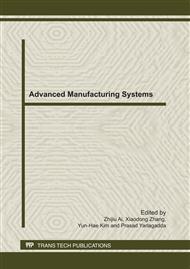p.400
p.406
p.411
p.416
p.420
p.426
p.431
p.435
p.440
The Prediction Model of COREX Cold Gas Content of Carbon Dioxide Based on MOSC-PLS
Abstract:
In COREX processes, the cold gas is produced in melter gasifier, after being cooled and dust controlled, blown into the blast furnace and used in the reduction reaction. The cold gas content plays a key role in the reaction of lump ore and pellets reduction. A prediction model of COREX cold gas content of carbon dioxide is proposed based on modified orthogonal signal correction partial least squares algorithm (MOSC-PLS). Firstly, the input and output variables of the model are selected according to the COREX processes principle. Secondly, MOSC algorithm is used to preprocess the data, in order to remove the irrelevant information between the input and output variables of the model. Finally, prediction model is built based on PLS. The real field data of cold gas content of carbon dioxide from Baosteel COREX are used for verification. The results show that MOSC-PLS has an advantage over the orthogonal signal correction partial least squares (OSC-PLS) in prediction accuracy. Thus the necessary decision supports and analysis tools for the cold gas content control are provided.
Info:
Periodical:
Pages:
420-425
Citation:
Online since:
September 2011
Authors:
Price:
Сopyright:
© 2011 Trans Tech Publications Ltd. All Rights Reserved
Share:
Citation:


